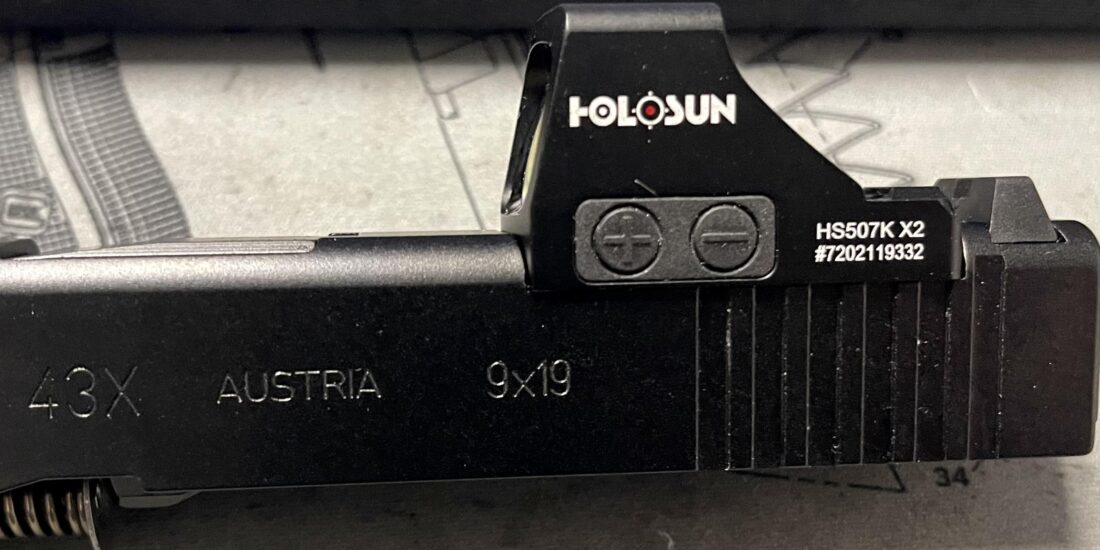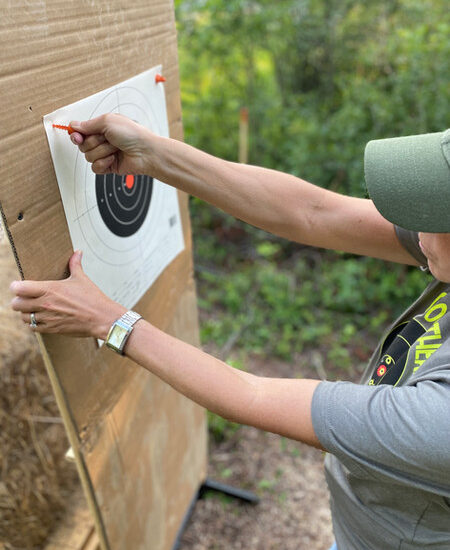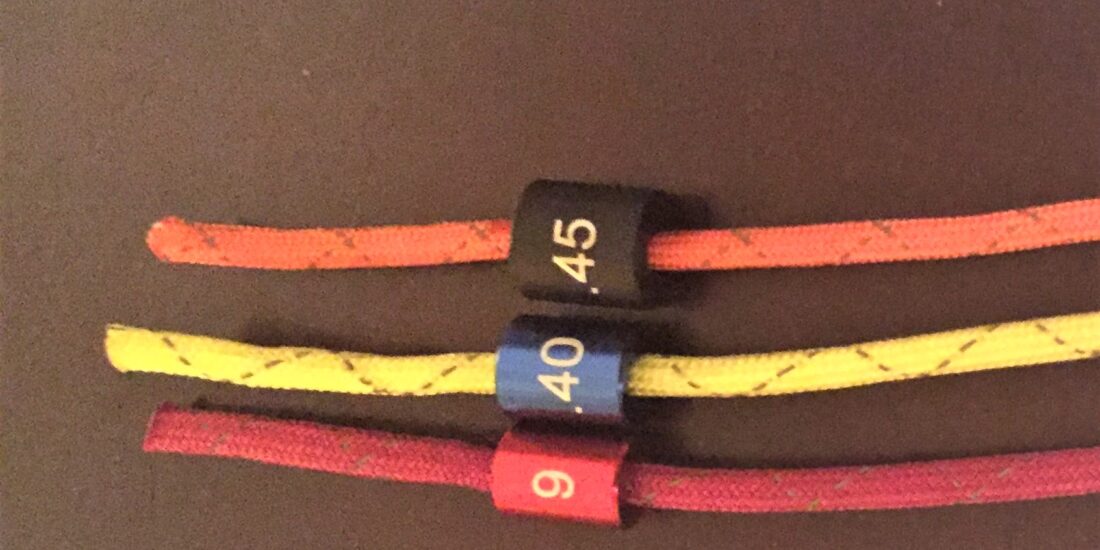The Myth of Pointing Accuracy
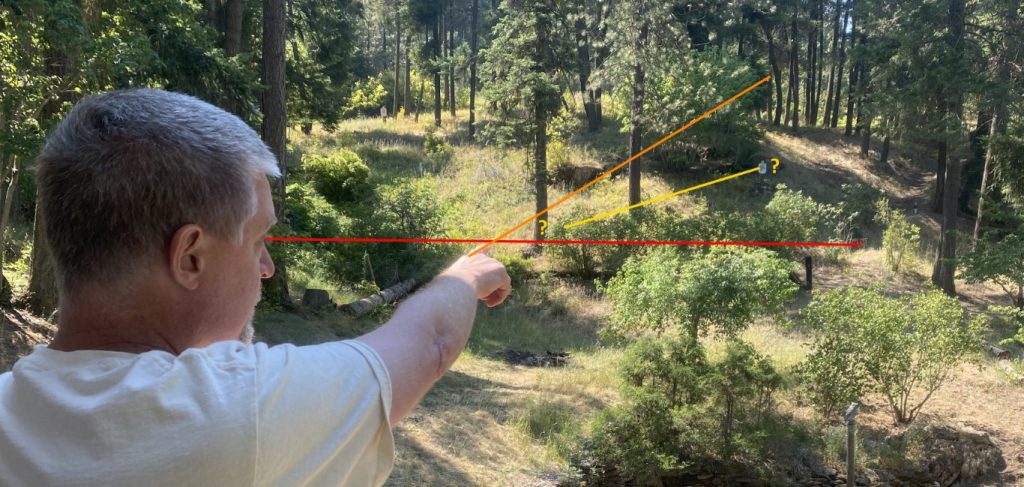
There is a myth in shooting that people have been “pointing since they were babies” so they can point a gun and hit what they want to hit.
The two statements “people have been pointing since babies” and “people can point shoot accurately” are both true, but they have no relation to each other.
Pointing accurately can be trained, but naturally accurate pointing…let alone naturally accurate point shooting…is a myth.
Accurate pointing is not true with touch screens, with shooting, or even men trying to hit urinals/toilets
With the advent of touch screens and gesture activated smart appliances, we now have studies to tell us just how accurate we are at pointing and how to improve it.
One 2009 study out of Australia, “Hand Pointing Accuracy for Vision-Based Interactive Systems” found that pointing inaccuracies could be as much as 9.5″ at 10 feet! That’s a miss on a head and could easily be the difference between an effective hit and an ineffective hit on the chest.
Even if you are SOMETIMES an accurate pointer, that doesn’t mean you always will be.
Ever hear of a field sobriety test? Where the challenge is to touch your own nose? This is way easier than accurately pointing at something not attached to your face.
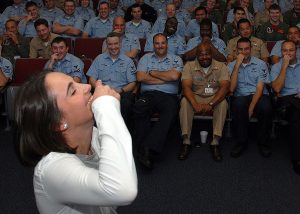
Our ability to point accurately drops off pretty quickly for some people with alcohol. But also with fatigue from sleep and fatigue from exertion. Age has a negative effect, warming up has a positive effect, hunger and blood sugar negatively impacts it, accuracy drops as movement speed increases, and concussions and TBIs usually cause a drop in pointing accuracy.
The speed factor is important. People are MUCH more accurate with pointing if they’re moving slow enough to correct movement based on what they see. That feedback/correction loop takes about .10-.20 seconds, which is way too long for point shooting and, if you need it, you’re probably better off using your sights.
One of the crazy findings is that a big factor in the ability to point accurately is whether or not you can see both your hand and the target before you start moving…which may happen in day-to-day pointing, but not for drawing, presenting, and shooting.
What IS pointing?
THIS is interesting.
When most people point precisely, they are lining up the tip of their finger slightly below the line connecting their dominant eye and the target. (red line below)
If you run a laser through their finger and extend it out, it would miss the target that they’re “pointing” at. (orange line below)
Here’s an illustration:
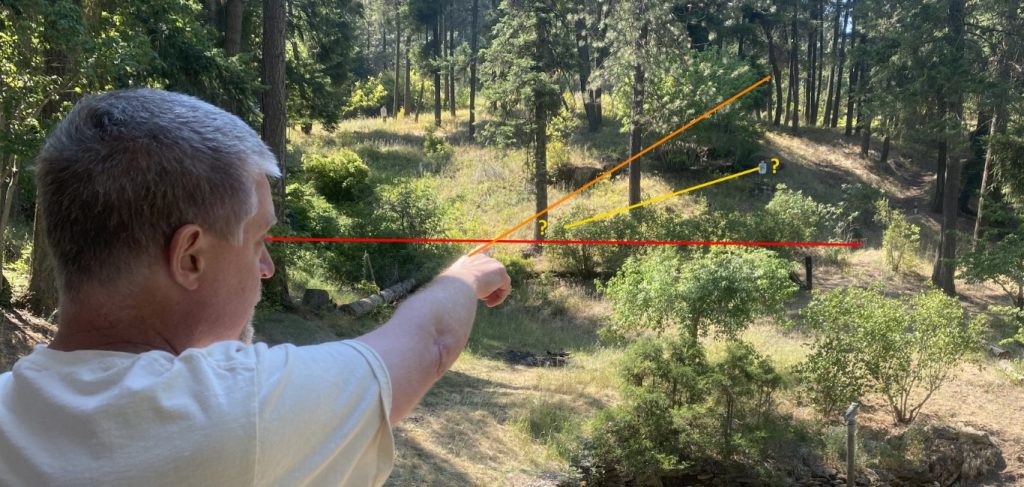
From my perspective, I’m pointing down the red line, at an orange target.
But when you look directly down my arm and along my finger, I’m pointing along the orange line…way off from what I THINK I’m aiming at.
To add even more complexity, from the perspective of the camera, it looks like I’m pointing at the white target.
How we define pointing becomes an issue with aiming a pistol as well.
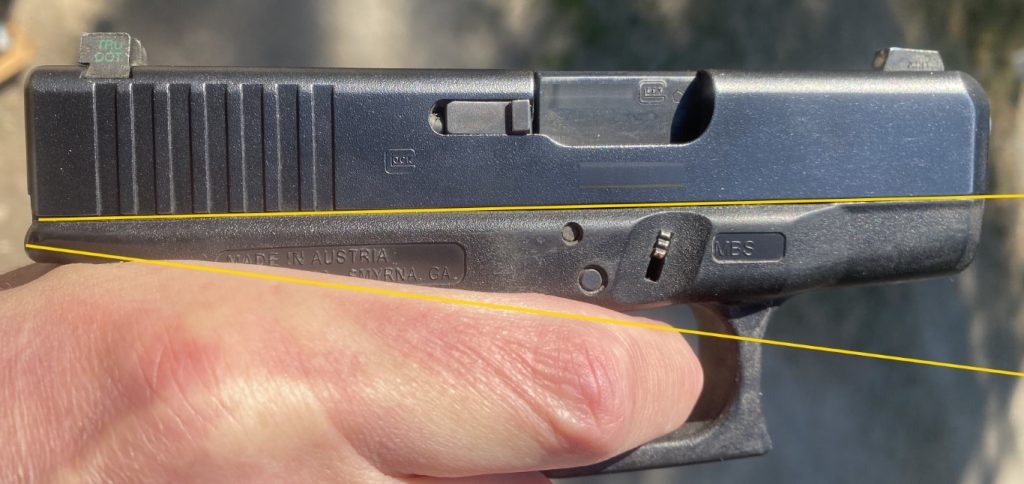
Are we concerned about pointing the muzzle or pointing our finger?
Since most defenders of point shooting claim that you can hit what you want point shooting because you’ve been pointing since birth, I’m going to go out on a limb and claim that the belief is that the finger and muzzle are both pointing at the same target at the same time.
When my grip is high on the backstrap and my finger is in the trigger guard, it is not parallel to the muzzle…so the muzzle won’t be aiming at anything that I’m “naturally” pointing at.
The case against point shooting as an inborn, instinctive ABILITY (vs. skill) gets worse…
Because even if you get accurate pointing figured out and apply it to the muzzle, CONSISTENT accurate pointing with a pistol depends on a consistent grip and there is nothing inborn about that. It’s a SKILL that has to be practiced on a regular basis.
Does that mean point shooting doesn’t work or can’t work?
NO! Absolutely not.
It means that point shooting as an ABILITY you’re born with is a myth. But point shooting or unsighted shooting IS a skill that can and should be developed.
Like any skill, there are hard ways and easy ways to do it…right ways and wrong ways.
Most people learn point shooting in isolation through high repetition, brute force training.
A better approach is to practice your sighted shooting in a way that simultaneously gives you point shooting skills…and red dot skills…and skills that carry over to carbine.
And, at the same time, do drills that improve hand-eye coordination…so you can slash the number of rounds or reps that it takes to build the skill AND improve your cold (not warmed up) performance.
Improving hand-eye coordination delivers the sights between your dominant eye and the target quicker and more accurately, regardless of whether you’re doing sighted or point shooting.
I’ve got a presentation on it that you may want to watch at https://AutomaticAiming.com
It covers several misunderstandings about eye dominance, visual confusion, both eyes open shooting, and hand-eye coordination for shooting.
-Ox
“Don’t Just Train Hard…Train Smarter Than The Other Guy”
“Hand Pointing Accuracy for Vision-Based Interactive Systems” https://link.springer.com/chapter/10.1007%2F978-3-642-03658-3_4
“Biomechanics of Pointing to a Perceived Target: Effects of Fatigue and Gender” https://link.springer.com/chapter/10.1007/978-3-642-21683-1_59
“Factors Influencing Proprioception” https://www.intechopen.com/chapters/19663




